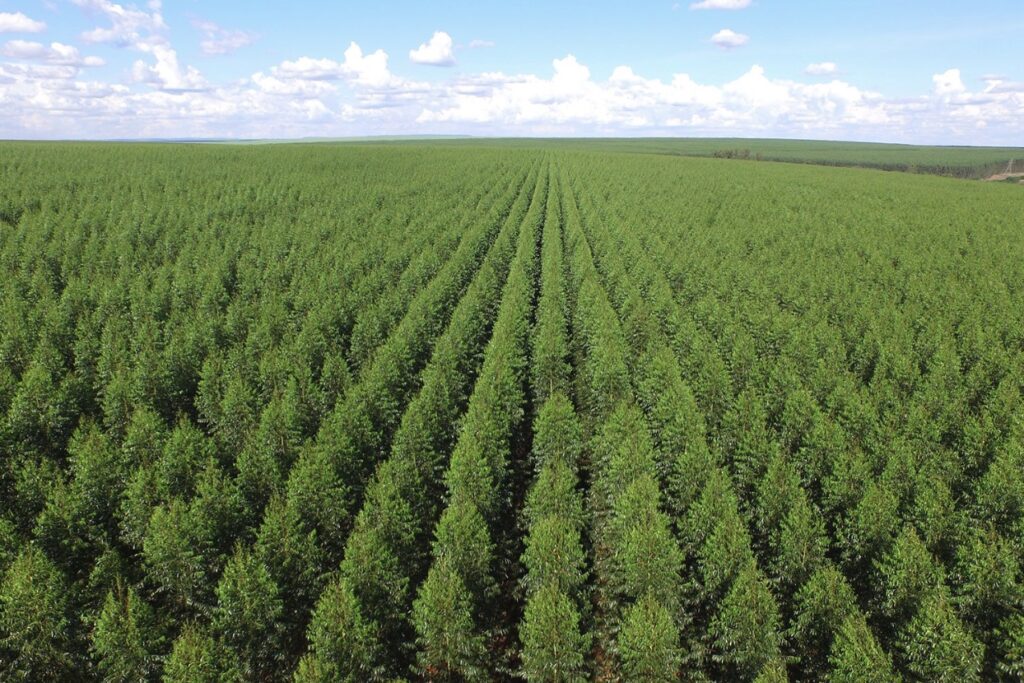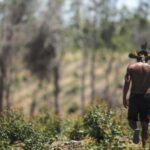Why Forest Investors need to stop using the word Monoculture and focus instead on the nuances of Sustainable Forest Management
This article is inspired by a comment to the photo of my last article, which stated “That photo looks awfully like a monoculture”. It got me thinking – What actually is a monoculture? It’s not the first time I’ve been drawn into this debate. In fact, many of the best practice Standards avoid using the term all together, and I think I would tend to agree with this.

Monoculture Definitions (or lack thereof)
I’ve seen many forest investors – from traditional institutional investors through to corporate investors with an interest in forest carbon have restrictions in their investment policies around monocultures. Yet when asked what they mean by this – they don’t really have an answer. Often the response will have something to do with forest investments that manage for a single exotic species – yet the reality is more nuanced. Before I explain what I mean by this – let’s take a look at some of the best practice setters in the realm of sustainable forest management and how they define monoculture.
FSC – In their most recent glossary of terms in the FSC Standard, there is no reference to the word monoculture. The term does pop-up, however, in their works. Look at this article on Sustainable Forest Management for example, where they write “Many plantation operations maintain both intensively managed monoculture plots and natural areas where the plants, animals and people that depend on it can thrive. A typical practice would create buffer zones along streams or designate forest patches to protect and restore natural vegetation”.
PEFC – In their Sustainable Forest Management Requirements, there is no reference to the word monoculture. Note that PEFC sets high-level standards and requires country-specific standards to be set, and this investigation did not look into country standards.
SFI – In their 2022 Sustainable Forest Management certification standard, there is no reference to monoculture. Interestingly, there was a comment from the public comment review period of the recent standard that states “Not all forests are naturally diverse. Early successional forests (e.g., aspen, jack pine, red pine) often naturally regenerate into near monocultures after disturbance, and then diversify as they age. There are wildlife species adapted to those conditions that cannot thrive without it”.
Verra – In their updated VCS Standard – states that under section 3.19.27, 3. For ARR and WRC activities the project shall not introduce non-native monocultures. Yet “monoculture” is not defined. This is causing quite a stir among forest carbon project developers at this ambiguity, and Verra is now scrambling to land on a definition.
The UN’s FAO – In advance of their global 2025 Forest Resource Assessment, in 2023 has published a list of terms, and there is no reference to the word monoculture. On their website, FAO instead refers to a plantation forest – an intensively managed planted forest that at maturity is composed of one or two species, has one age class, and has regular tree spacing.
CDP – CDP is a non-profit disclosure system for investors, companies, cities, states, and regions to manage their environmental impacts. In a search on the CDP website for monoculture, an article came up that described monocultures as forests ‘that provide just a few’ services, when compared to natural forests. Still – no definition…
WRI – The World Resources Institute, in their Global forest review, don’t define monoculture, but refer to it in the context of a type of planted and managed forest as providing tree crops and fastwood. However, in their key terms, you guessed in – no definition of monoculture.
CBD – In the outdated, but most recent reference I could find to forest monocultures, The UN Convention on Biological Diversity in their paper on Forest Resilience, Biodiversity and Climate Change reference monoculture, but don’t define it. It suggests that monocultures are planted forests with low species richness and refers to a segment of monocultures as non-native plantations.
Sustainable Forest Management not Monoculture
Based on the above references to monoculture (if lacking a clear definition), let’s generalize that what is meant by the term is planting and managing few forest species (sometimes exotic, sometimes not), planted at even ages under a uniform forest management regime. There is no reference in any of the above sources to the area in which a monoculture takes place. Also note, that in some ecosystems – nature mimics single or few species grown at even ages (for example, after a fire).
I won’t dig into the ‘literature’ from the anti-monoculture proponents, but I think we can all agree on their argument – monocultures harm biodiversity and natural ecosystem processes in favor of commercial gains from managing for timber optimization. Now, this unfortunately does happen, but not in every case. Here I’m going to explain how you can have your timber cake and eat it too!
Biodiversity and Ecosystem Objectives
If your forest investment has legitimate biodiversity and/or other ecosystem services objectives, planting or managing for single or few commercial species can provide multiple forest benefits. Now to be clear – what I mean be legitimate, is actually understanding the biodiversity and other ecosystem services in the forest under management, setting targets on what to protect or improve, managing for these, and monitoring performance. So long as you are NOT clearing existing forest, NOT converting ecosystems into planted forests with your commercial species, and NOT poorly matching commercial species to the natural conditions offered by the site, and instead carefully integrate your intensively managed commercial plantations on the landscape together with your areas managed for biodiversity and ecosystem objectives – then your strategy can deliver on all of commercial, biodiversity and other ecosystem objectives.
Forest Species
Often regions of intensively managed forest plantations will stick to single species management due to several factors: such as site suitability (as mentioned above), but also the availability of seedlings or clonal cuttings, downstream processing facilities (saw mills and pulp mills for example), and the end markets. Examples of this are Eucalyptus plantations in Brazil and Radiata Pine plantations in New Zealand. I won’t even attempt to change these very sophisticated full forest value chain models, however – there is opportunity for improvement. If you’re an investor and like the strong business case of these well-developed models, but are hesitant to continue with the single species system – there improvements you can make, while still benefiting from the strong investment case posed by intensively managed single-species management
- Focus commercial species in already intensively managed areas or in degraded forestland, ensuring (through site surveys) that the species are biologically, geologically and climatically suitable for the site (to not mess with natural soil and water processes).
- Establish trials in small corridors or compartments of mixed species – these can either be native species, or other exotics that have commercial characteristics.
- Plant or protect native tree species in areas that won’t be managed for commercial timber production.
- Manage protection zones to ensure there is no encroachment from exotic commercial tree species.
Forest age-class distribution
Often greenfield forest plantations are developed quickly, which over time can lead to the even-aged stand structure, or green deserts criticized by many in the biodiversity community. Commercially this makes sense, as you want to get your trees growing quickly, but it can lead to mass harvest events and homogenous age-class structures that prevent different flora and fauna from being present in the forest. It may also lead to water and nutrient stress (if site-species matching is off), where commercial trees may be particularly demanding in given years, and then if there are mass clear cuts on sites not used to the disturbance, you could have erosion. One way to avoid this challenge is to achieve over time, a mixed rotation – so that even if you plant out your area in 5 years, let’s say you have a 15-year rotation – that in the end you will be harvesting 1/15th of the forest per year to keep a mix of forest structures to allow for biodiversity and ecosystem services that favor different stand ages.
Forest landscape design
I mentioned this above – that not only does monoculture not have a clear definition, but there is no agreement on how big a planted area of single or few species needs to be to contend for this awful name. Consider the following scenarios and reflect on whether or not you would consider these to be monocultures:
- 10,000 hectares of Eucalyptus planted while meeting legal requirements to protect a certain percentage of the landscape with native forests or other natural ecosystems (ie. wetlands, meadows),
- 100-hectare parcels of planted Pine over hundreds of thousands of hectares of semi-natural forest, which would naturally have 1-2 main species dominating the forest,
- 10,000 hectares of mixed pine and eucalyptus planted in homogenous compartments, interspersed with native riparian areas and other intact native forest corridors managed for conservation objectives.
How the forest landscape is designed is a key piece in determining whether ‘monoculture’ is harmful to biodiversity and natural ecosystem processes. Managing homogenous compartments of a single species, under a single silvicultural regime can support in the forest requiring minimal interventions (in terms of harvesting machinery, and residual tree damage). Ensuring that conservation areas are not disconnected wildlife islands will help support habitats and complex ecological functions that are better served through connected corridors. Further, ensuring that conservation areas cover different types of ecosystems – not only riparian areas, but also dry rocky shrublands, meadows, and intact forest – wherever there is variety in your managed forests, this should all be represented in your protection zones.
No More Monoculture
Not the practice, the word.
And when I say not the practice, this comes with conditions. As a forest investor, more often than not, your forest assets are going to be comprised of a few species on any given site. So long as you consider the aspects I mentioned:
- Set biodiversity and ecosystem objectives,
- Smartly diversify tree species (suited to the site and the objectives),
- Design your silvicultural regime to have a mixed age-class structure (also helps even out cashflow), and,
- Design integrated forest landscapes for multiple commercial, biodiversity and ecosystem objectives.
-you will be strongly placed to defend your use of the commercial contenders in your forests.
I realize this is easier said than done. If you are a forest investor and are looking for ways to appease your anti-monoculture stakeholders, while designing a multi-objective forest investment strategy, please reach out.
Did you like this article? Sign up now for the ForestLink’s newsletter, where you’ll receive technical advice, reflections, and best-practice guidance to support you with your forest-linked investment strategy or business straight to your inbox.





